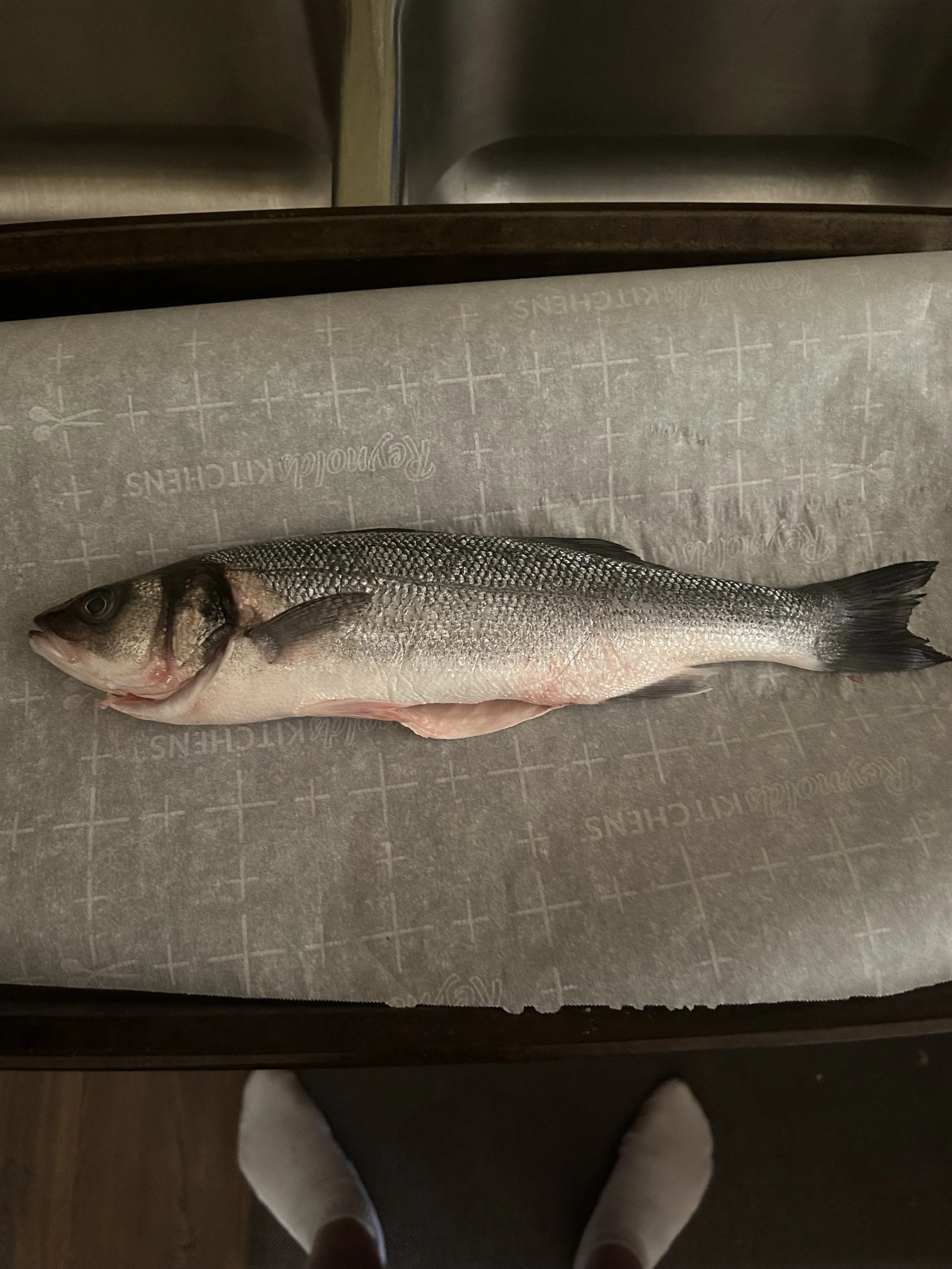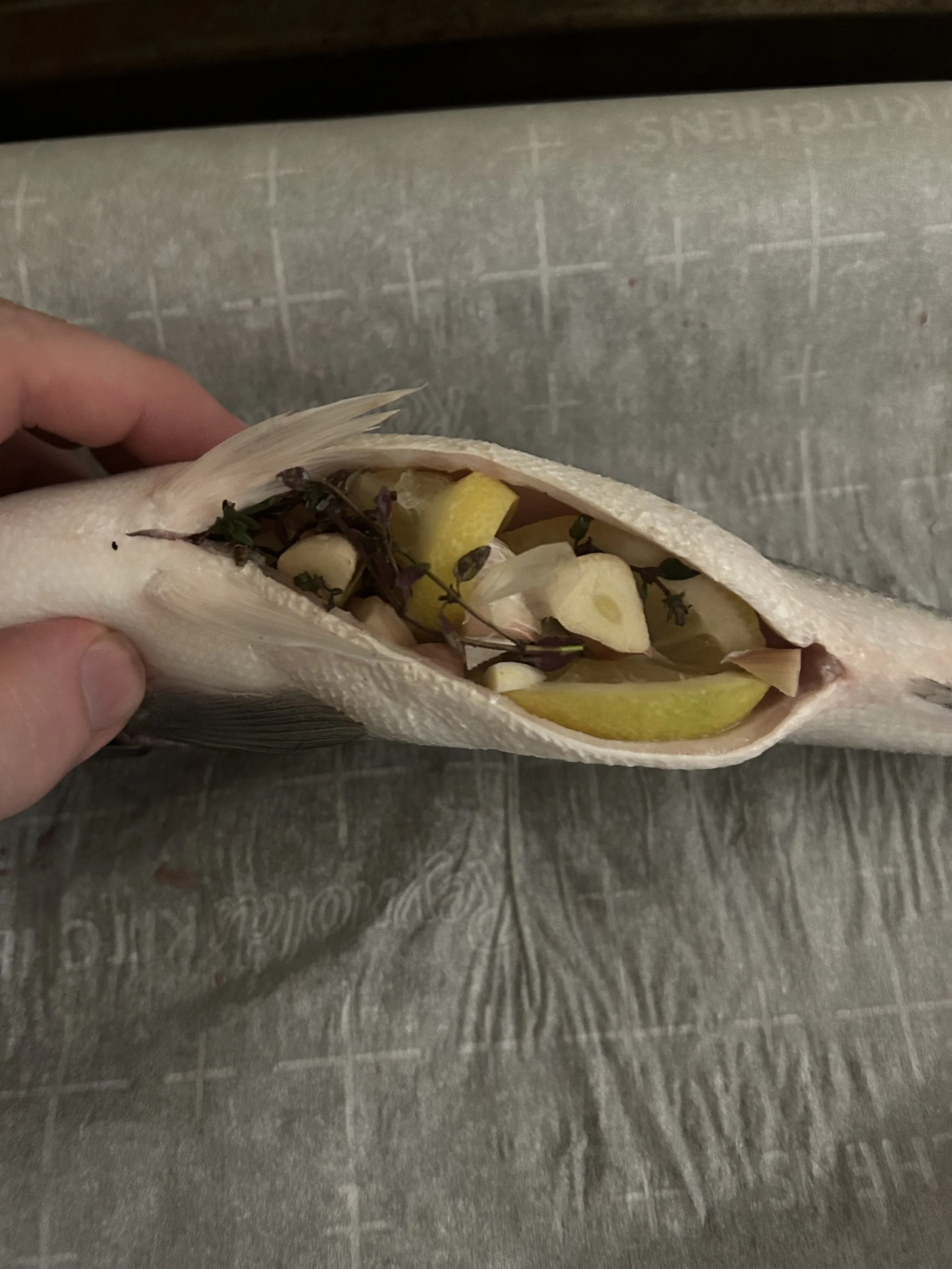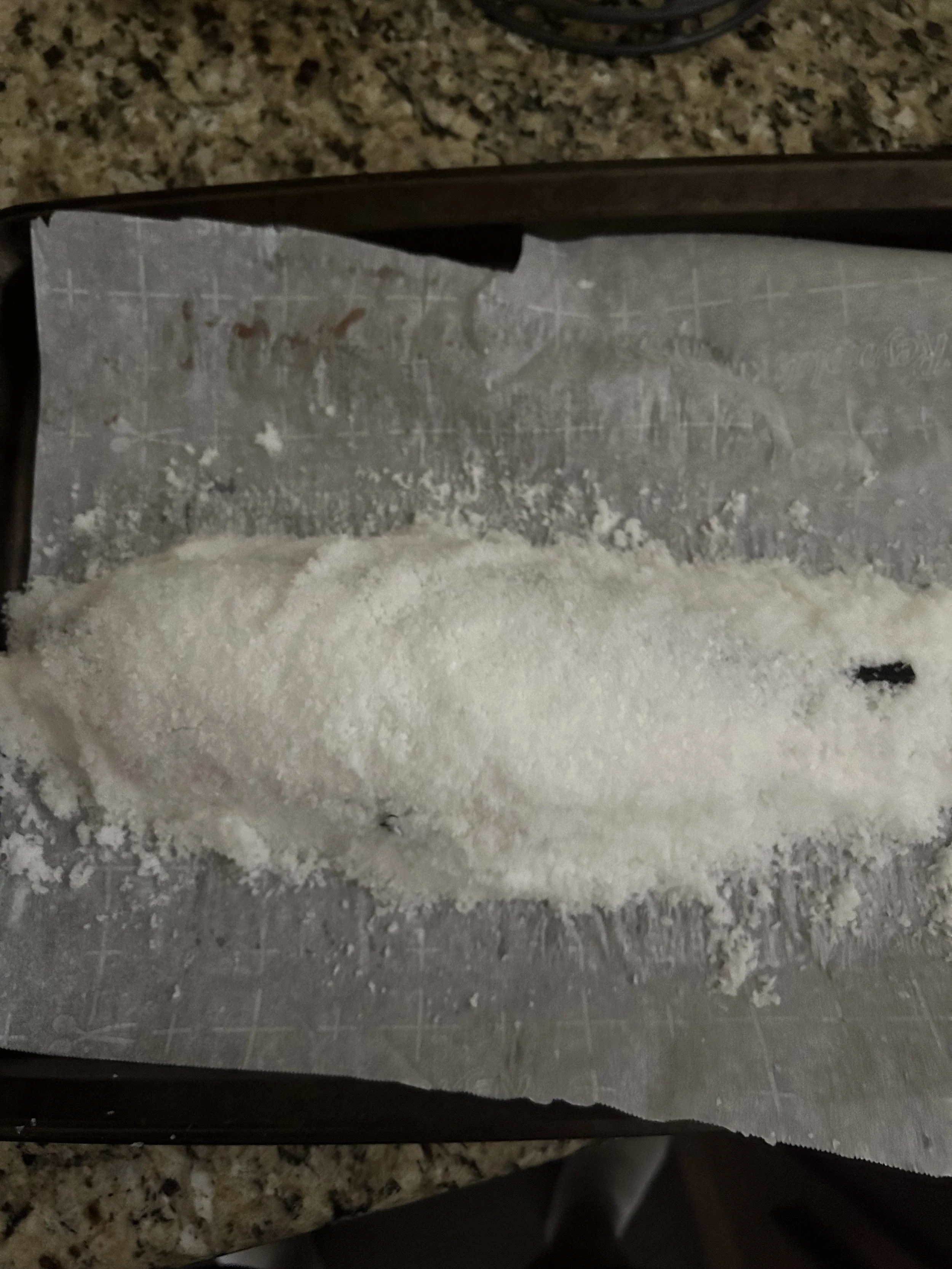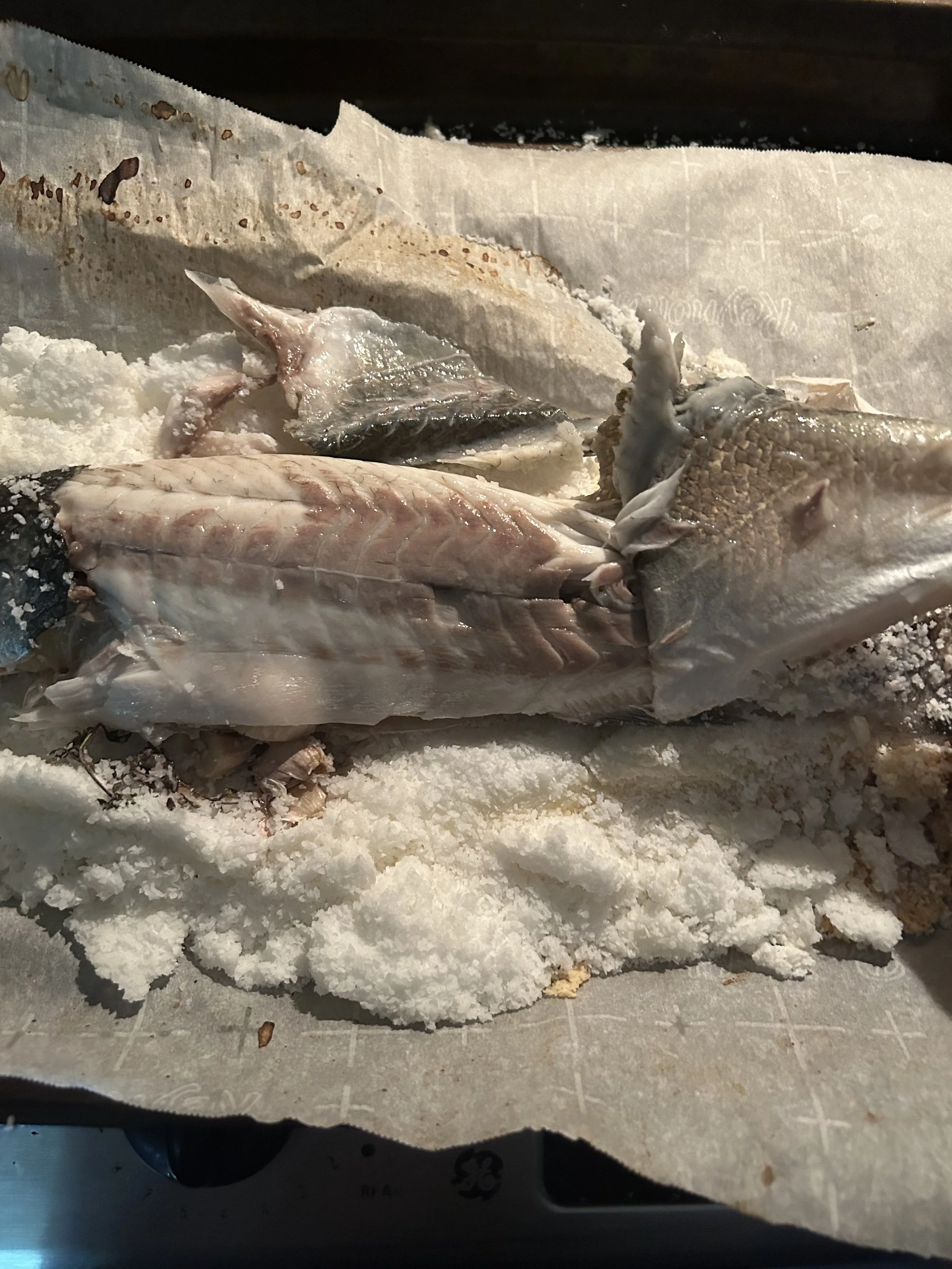Salt-Crusted Fish
If there is one thing that may potentially scare home cooks more than anything, it’s the thought of cooking whole fish. They likely see the eyeballs, fins, and all that other stuff and think there’s no way this can taste good.
However, cooking fish on the bone, just like with any other type of meat, is an incredibly delicious thing to do, it makes the fish very tender and flavorful, and a very classic way to do that is by baking the fish in a salt crust.
Crusting the fish in salt won’t make it salty, but instead, the salt will seal in the juices and flavor from the fish and make it incredibly flavorful and juicy. There are a few guidelines you’ll need to follow, but for the most part this process is easy and can guarantee delicious results.
As for serving, you can do it with some polenta cakes, broccoli rabe, salad, or anything you like with your fish.
Now, when you are shopping for your whole fish, look it over. There should be no discoloration, the eyes, and gills should be bright, and it should be free of any odors.
Also, don’t worry about scaling the fish, in fact, the scales and the skin will help protect the flesh from the fish from getting salty. Although many fishmongers and grocery stores will scale the fish before it hits the fish counter, but that shouldn’t be an issue.
There are lots of fish that can be salt-crusted, from round fish like salmon, trout, or red snapper to flat fish like sole, but I would stay away from oily fish. Today, I’ll be working with beautiful branzini, a European seabass, as it has a mild flavor and firm texture.
With that being said, let’s get cooking!
Salt-Crusted Trout
Servings: 1-2
1 lemon
1 whole branzini or rainbow trout, scales and guts removed.
1 bulb of garlic, cut in half.
1 thyme sprig
1 1/2 pounds of kosher salt (see note)
3 egg whites
Olive oil, for drizzling
Note: I know this sounds like an insane amount of salt, but you really do need it to completely cover the fish and form that crust.
Preheat the oven to 375 degrees and line a baking sheet with parchment paper. Slice half of the lemon into 1/2-inch thick slices and cut the remaining lemon into wedges.
Sprinkle a little bit of salt inside the cavity of the branzini where the guts used to be, since the skin from the fish will be protecting the flesh from the salt crust, making sure you season the inside is important.
Place the lemon slices, garlic, and thyme sprig inside the cavity
Mix the salt and egg whites in a large bowl until it forms a paste. You want there to be enough of the egg whites to give the salt a snow-like appearance, you should be able to pick up a small ball of the salt and toss it back and forth in your hands like a snowball.
As the branzini bakes with the salt crust, the egg whites will cause the salt to set and form a shell around the fish which will keep the juices and flavor inside the fish where it belongs.
Lay a bed of salt that’s longer and wider than the fish on the bottom of the sheet pan, using your hands to make sure that the salt is flat.
Lay the fish on top of the salt, then completely cover the fish from head to tail with the remaining salt. You really do want to make sure that the fish is completely coated in salt, it should look like the fish is being put to bed and covered in a salt blanket.
Transfer the fish to the oven and bake for 15-20 minutes, or until the fish is fully cooked (internal temperature of 135 degrees). Let the fish rest for at least 10 minutes after cooking.
To get ready for serving, start by using a spoon to crack the salt crust and peel it off of the fish. It should come off in large chunks.
Remove the fish from the pan, and lay that on a serving platter or plate. (You can remove the head at this point if you want.) Peel the skin away from the flesh, then use a spoon or thin spatula to gently push the flesh away from the bones.
Top with a drizzle of olive oil, and serve with the lemon wedges.
Upon tasting this, you should notice that the flesh of the fish isn’t salty, necessarily, but instead is incredibly juicy, flavorful, and tender, and you can thank that salt crust for doing the majority of that work.






